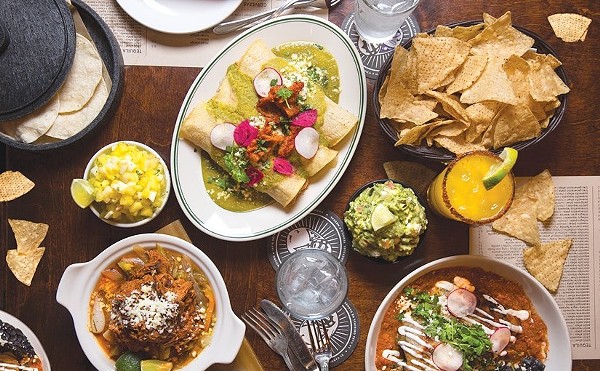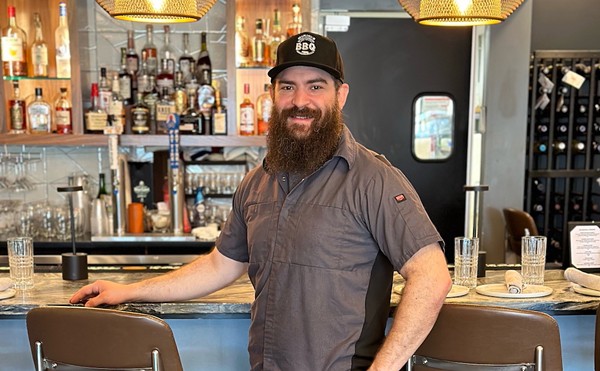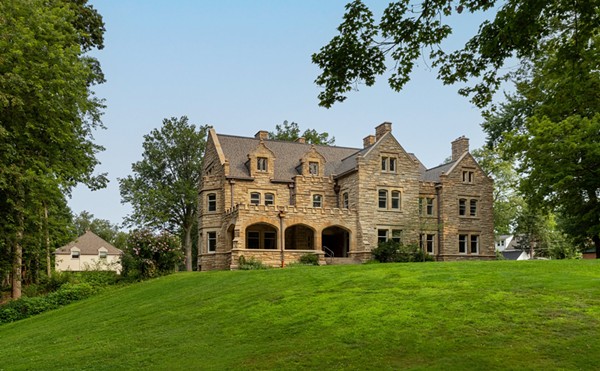Heather Bise was hard at work on the next cocktail menu for Club Isabella in University Circle when she ran into a bit of a roadblock. "I knew I was onto something with my Manhattan, but it just wasn't singing to me," she said.
It wasn't the Knob Creek bourbon or Carpano Antica sweet vermouth that threw things out of balance; if anything, both are sterling examples of their respective categories. And it wasn't the few dashes of Angostura bitters either, without which the Manhattan would be, as Bise puts it, "overly sweet and sort of disgusting." No, it was her decision to garnish the drink with a fresh fig.
Novice bartenders would probably just swap out the fig in favor of a more traditional flamed orange peel, but Bise had other ideas about righting the wrong. "The flavor profile of traditional bitters wasn't right for my version of the drink," she said, referring to the clove, cinnamon and orange peel-forward Angostura. Instead, she kept the fig but replaced the bitters with one that was a better fit for her blend.
"While doing some research online, I came across Bitter Frost by Tuthilltown Spirits, a barrel-aged aromatic bitters made from sarsaparilla and several other herbs and spices first macerated in unaged rye and maple syrup," says Bise, who tracked down a bottle in New York City. And lo and behold, her take on the Manhattan now truly sings.
Bitters are extremely strong and astringent extracts of fruits, herbs, and spices that entered the public consciousness as medicine in the 1800s, when popular recipes like Angostura (1820) and Peychaud's (1830) promised to cure everything from indigestion to loss of appetite. If these health claims sound like voodoo, consider that gentian root, the primary bittering agent in those brands, has been used for generations as an herbal remedy to treat precisely those kinds of ailments.
"Growing up, my mother would have us suck on a lemon doused with bitters when we had an upset stomach," recalls Daniella Grand, manager at the Willeyville in the Flats. If your entire body puckers at the mere mention of that, instead try a few dashes of bitters with a glass of soda water the next time your stomach is reading you the riot act.
By the mid- to late-1800s, every neighborhood pharmacist worth his salt offered medicinal tinctures that promised to cure just about everything, which should come as no surprise given that they also dispensed cocaine for toothaches. A cocktail "made in the old-fashioned way" would have combined those medicinal bitters with a spirit and a little sweetener to make the concoction more palatable. The Old Fashioned and Sazerac are two timeless examples.
In 1906, Congress passed the Pure Food and Drug Act, which imposed labeling restrictions on products containing alcohol, among them bitters. This served as a death knell for the patent medicine – aka snake oil – industry, but took down with it a lot of well-meaning bitters. Many of those that survived were later clobbered by Prohibition.
These days, bitters are used less as a cure for what ails you and more as a cure for what ails your drink. "They add depth of flavor and balance to any cocktail, and they bring out flavors from other ingredients that you may not have tasted before, much like salt and pepper do for food," notes Grand.
Thanks to a renewed interest in classic cocktails, there's been a renewed interest in bitters as well. While most bars and restaurants around Cleveland have embraced classic brands like Angostura, Peychaud's, Fee Brothers and Regan's, others are going the extra mile to craft their own. The next time you order the Flying Dutchman at Willeyville, the Mr. Figgy at Crop Bistro, or the Hamhattan at Society Lounge, take an extra moment to savor the drink, because each contains housemade bitters.
"The bitters program at The Willeyville is a natural extension of our restaurant's everything-from-scratch philosophy," Grand adds. The restaurant currently features three housemade bitters: aromatic (like Angostura), orange and key lime. More will be added on a seasonal basis. "The goal is to give customers flavors they can't find elsewhere."
Most bitters are extremely alcoholic, but the Fee Brothers line (1864) uses a glycerin base, making them suitable for use in any non-alcoholic mocktail. If you're going to play around with bitters at home—and you should—remember that a little bit goes a long way. That's why recipes call for drops or dashes, not tablespoons or ounces.
You can buy most of the aforementioned brands at your local liquor store, but your best bet for branching out is by going online. New York City-based Whisk (whisknyc.com) features dozens of bitters, from mole to Sriracha, all painstakingly crafted by BoHo Brooklyn hipsters for your enjoyment. No prescription needed.









